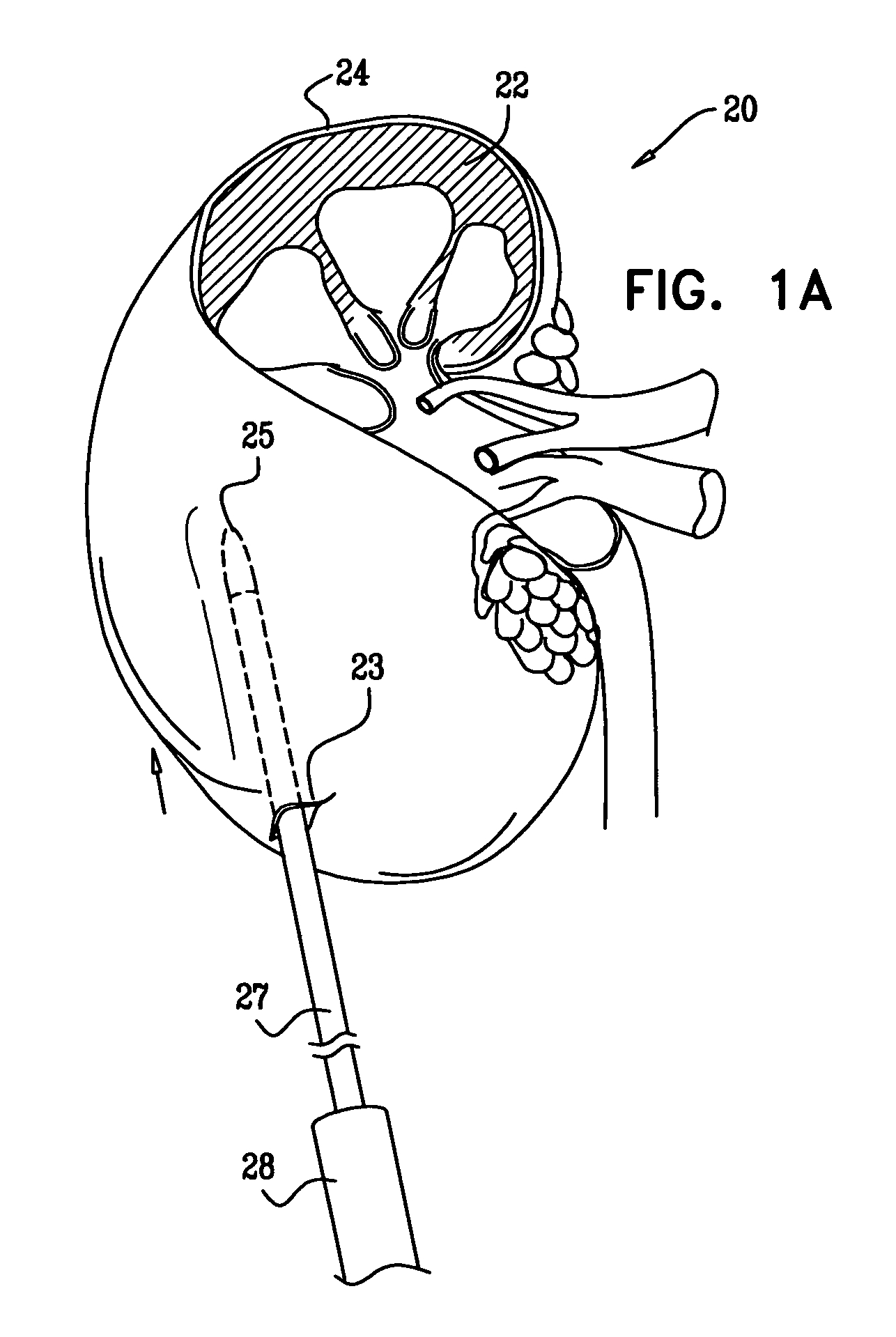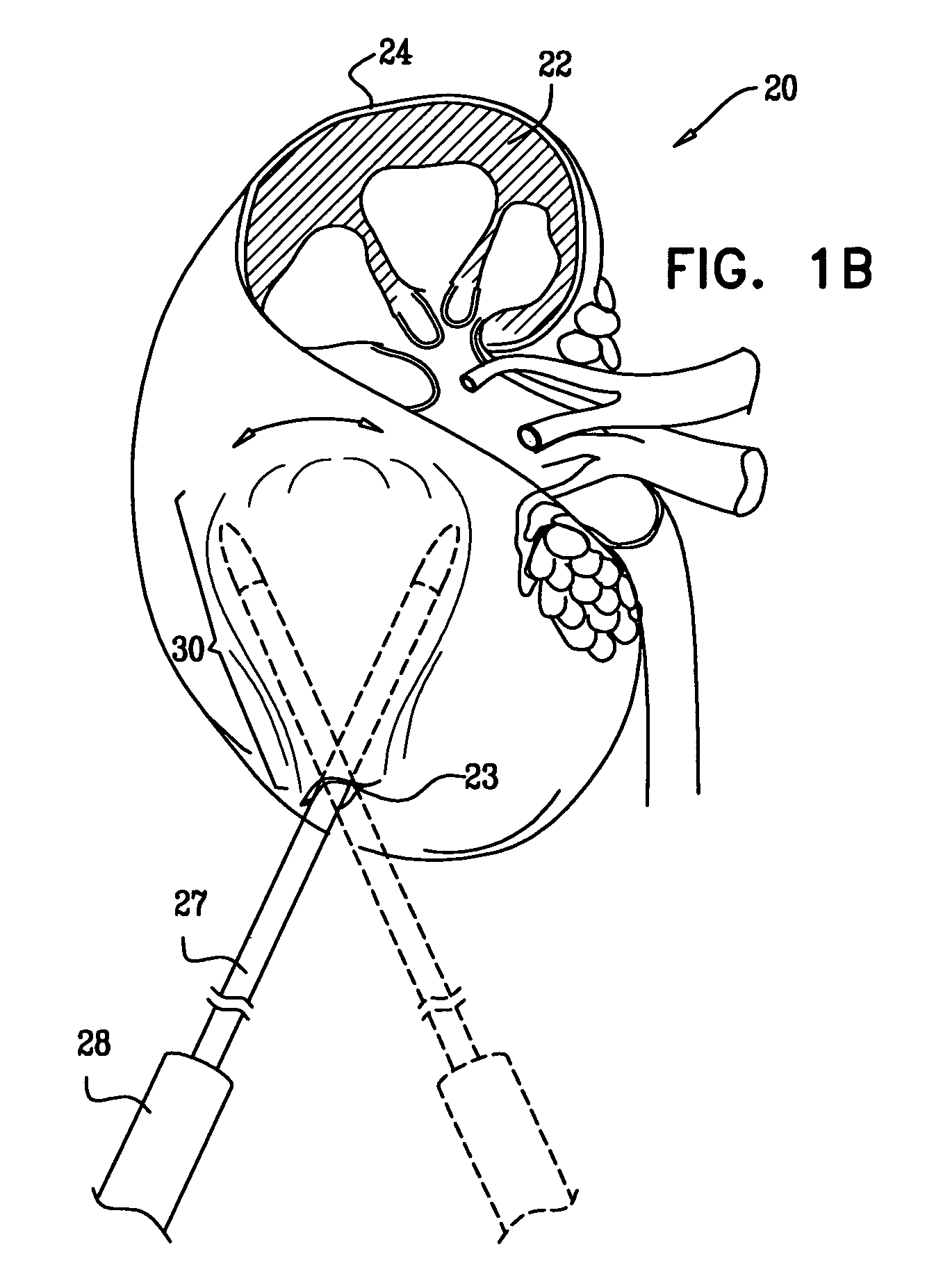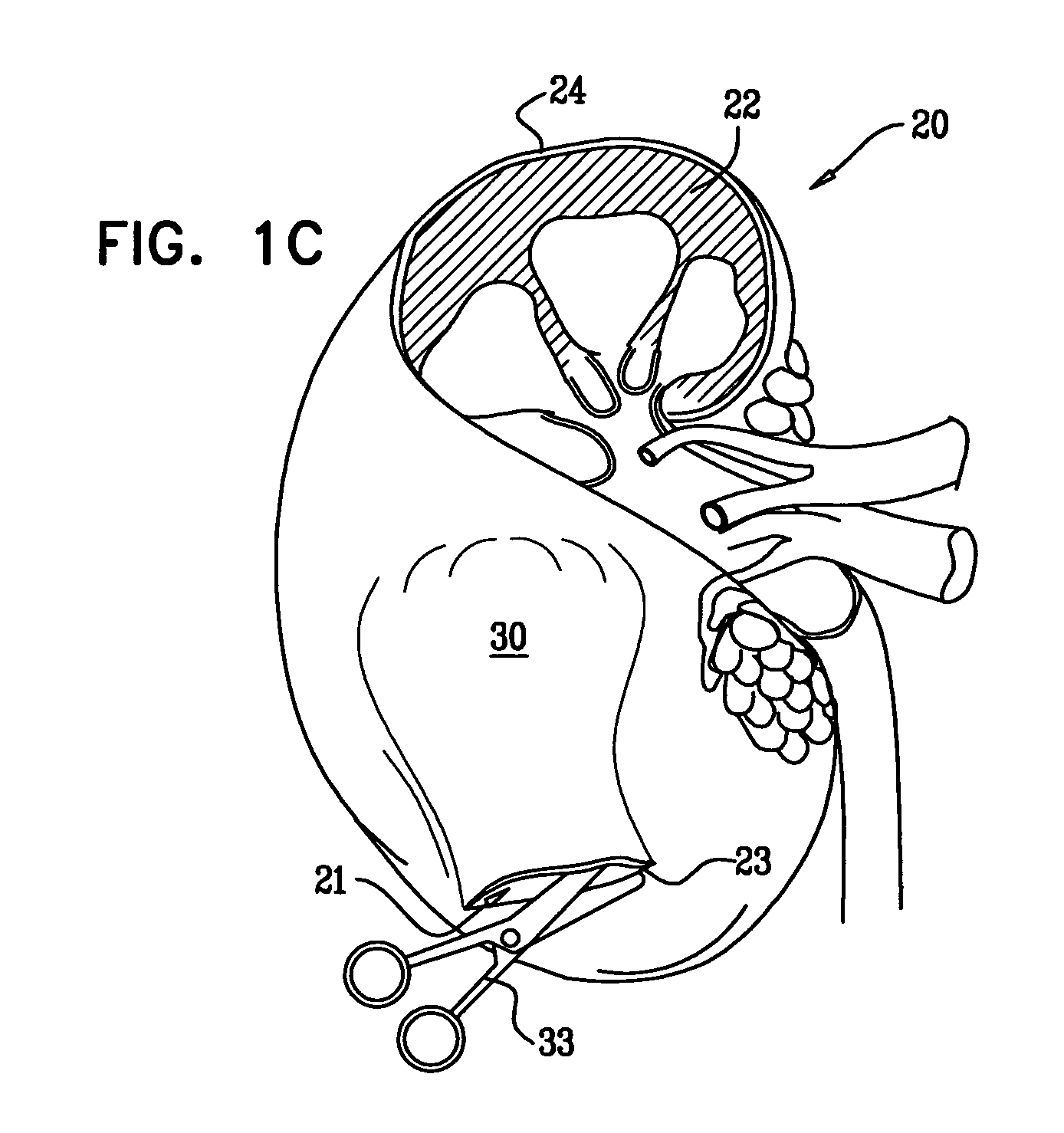Optimization of alginate encapsulation of islets for transplantation
a technology of alginate encapsulation and islets, which is applied in the field of alginate encapsulation of islets, can solve the problems of inability to support the subcapsular space of the kidney, and achieve the effects of reducing and increasing the total volume of alginate encapsulation
- Summary
- Abstract
- Description
- Claims
- Application Information
AI Technical Summary
Benefits of technology
Problems solved by technology
Method used
Image
Examples
Embodiment Construction
[0145]Reference is now made to FIGS. 1A-F, which are schematic illustrations of a procedure 20 for transplantation of macroencapsulated islets in a subcapsular space 21 of a kidney 22, in accordance with some applications of the present invention. Islets are metabolically active and demand a large supply of oxygen. Once macroencapsulated, the islets are designated for implantation within the subcapsular space of the kidney, which is an area of the body adjacent to a vascular bed and is well perfused such that the area supports the oxygen needs of the highly-metabolic, macroencapsulated islets.
[0146]As has been shown in experiments detailed below, macroencapsulation of the islets in an alginate structure of planar configuration (e.g., a disc-shaped slab, a flat sheet, or any other generally planar shape) provides an efficient means of transplanting islets into the subcapsular space of the kidney.
[0147]As shown in FIG. 1A, renal capsule 24 surrounding kidney 22 is perforated by a need...
PUM
| Property | Measurement | Unit |
|---|---|---|
| thickness | aaaaa | aaaaa |
| volume | aaaaa | aaaaa |
| area | aaaaa | aaaaa |
Abstract
Description
Claims
Application Information
 Login to View More
Login to View More - R&D
- Intellectual Property
- Life Sciences
- Materials
- Tech Scout
- Unparalleled Data Quality
- Higher Quality Content
- 60% Fewer Hallucinations
Browse by: Latest US Patents, China's latest patents, Technical Efficacy Thesaurus, Application Domain, Technology Topic, Popular Technical Reports.
© 2025 PatSnap. All rights reserved.Legal|Privacy policy|Modern Slavery Act Transparency Statement|Sitemap|About US| Contact US: help@patsnap.com



